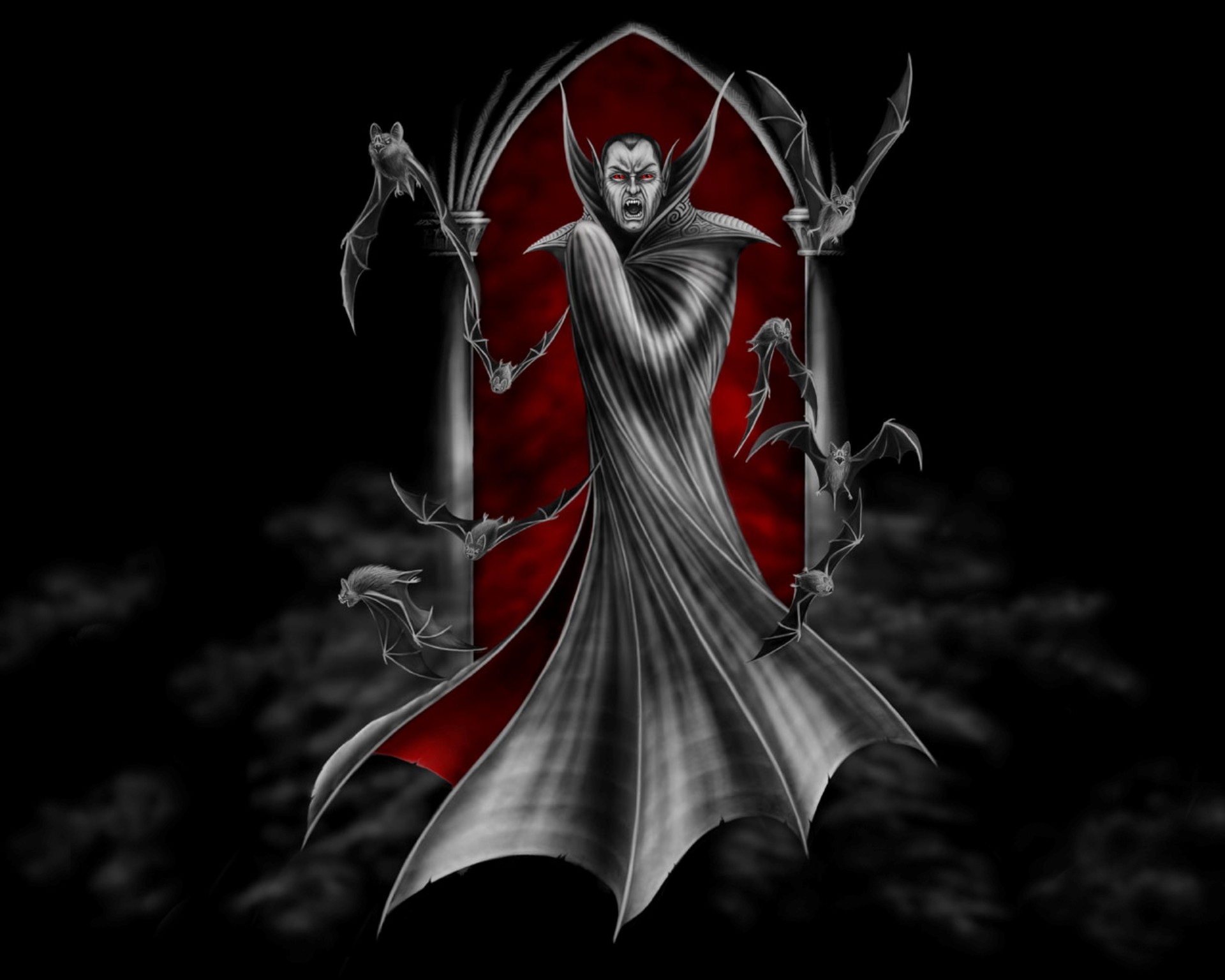
The origin of vampire legends is a fascinating journey through history and folklore. Vampires, as we know them today, have roots that trace back to ancient civilizations and various cultures.
The tales of the Lillu that date back to ancient Mesopotamia, around 3000-2000 BCE. These are some of the earliest written references to vampire-like creatures, making the Lillu one of the first known vampire entities in human history.
The Lillu (or Lilû) is a malevolent spirit or demon in Mesopotamian mythology, often depicted as a vampiric entity associated with causing harm and spreading disease.
The Lillu is often associated with the act of consuming blood, much like vampires in other mythologies. This association with blood-drinking is a significant reason why the Lillu is considered a vampire-like entity.
Like many vampire myths, the Lillu is believed to be active primarily at night. This nocturnal behavior aligns with the traditional depiction of vampires as night-dwellers who prey on the living after dark.
The Lillu is depicted as a predatory spirit or demon that harms humans. This predatory behavior is a common trait among vampire myths, where the creature preys on the life force or blood of its victims.
The Lillu is often connected with spreading disease and death, similar to how vampires are believed to bring death and misfortune to their victims.
In Mesopotamian mythology, the Lillu’s role as a malevolent spirit or demon that preys on the living and drinks blood makes it a precursor to the more modern vampire myths. While the Lillu might not fit the exact modern image of a vampire, its characteristics and behavior closely align with those of vampire-like entities found in various cultures around the world.
The myth of Empusa dates back to ancient Greece, particularly around the 5th century BCE. Empusa appears in various Greek texts, including those by Aristophanes and later Hellenistic literature. Her association with the goddess Hecate places her within the context of early Greek religious and mythological traditions.
Lamia’s myth originates in ancient Greece and also dates back to around the 6th century BCE. She is mentioned in various Greek myths and later Roman adaptations. The story of Lamia is referenced in works by poets like Ovid, who lived in the 1st century BCE, illustrating the myth’s persistence through centuries.
The Strix, or Striges, is rooted in Roman mythology, with references appearing from around the 1st century BCE to the 1st century CE. The Strix is mentioned in works by Roman poets such as Ovid in his “Fasti” and other classical literature of the time.
The Empusa is a shape-shifting female demon from Greek mythology. She is often associated with the goddess Hecate.
Empusa appears as a beautiful woman to seduce young men and drink their blood. She is said to have one brass leg, earning her the epithets “Onokole” (donkey-footed) and “Onoskelis” (donkey-legged)1. In Aristophanes’s play “The Frogs,” Empusa transforms into various forms, including a bull, a mule, a beautiful woman, and a dog. She is also mentioned in the “Life of Apollonius of Tyana,” where she confesses to fattening up a young philosophy student to feed on him.
Lamia is a child-eating demon from Greek mythology. She was originally a beautiful queen of Libya who had an affair with Zeus.
Hera, Zeus’s wife, robbed Lamia of her children, driving her to madness. In her grief and vengeance, Lamia began to prey on other children. Zeus gave her the power of prophecy and the ability to take out and reinsert her eyes, possibly because she was cursed with insomnia. Lamia is often depicted as a half-woman, half-snake creature. In later traditions, she became synonymous with the Empusa and other seductive demons.
The Striges are bird-like creatures from Roman mythology. They are often associated with witchcraft and the night.
Striges are described as large-headed birds with transfixed eyes, rapacious beaks, greyish white wings, and hooked claws. They are said to prey on infants, disemboweling them and feeding on their blood. In Antoninus Liberalis’s “Metamorphoses,” the Striges are the transformed forms of Polyphonte and her bear-like sons Agrios and Oreios, who were punished for their cannibalism. The Striges were believed to be harbingers of war and civil strife.
The myths of Lamia and Strix originate from Ancient Rome, respectively.
The myth of Lamia dates back to around the 6th century BCE in Ancient Greece. She is mentioned in various texts and stories from that era, including works by poets like Ovid and Philostratus.
The myth of the Strix appears in Roman mythology, with references dating back to around the 1st century BCE to the 1st century CE. The creature is described in works by Roman poets such as Ovid in his “Fasti” and other classical literature.
Lamia is a figure from Greek mythology, initially a beautiful queen of Libya who had an affair with Zeus.
According to myth, Hera, Zeus’s wife, grew jealous and vengeful, robbing Lamia of her children or, in some versions, killing them. Driven mad by grief, Lamia transformed into a monstrous figure who preyed on other people’s children, sucking their blood and consuming their flesh.
Lamia was often depicted as a half-woman, half-serpent creature. In later traditions, she became synonymous with other seductive demons like the Empusa. Lamia’s tale highlights the themes of maternal grief and vengeance, as well as the dangers of divine jealousy. Her ability to take out and reinsert her eyes was a gift from Zeus, possibly to help her endure her insomnia and eternal grief.
The Strix (or Striges) comes from Roman mythology, and its name is derived from the Greek word for “owl.” These creatures were considered harbingers of doom and associated with witchcraft and night.
The Strix is described as a large-headed bird with transfixed eyes, a rapacious beak, greyish-white wings, and hooked claws. They were believed to prey on infants, disemboweling them and drinking their blood. The Strix’s cry was thought to foretell death or disaster.
In Ovid’s “Metamorphoses,” the Striges are transformed beings, originally humans cursed for their crimes. One tale tells of Polyphonte and her sons Agrios and Oreios, who were turned into Striges by Zeus as punishment for their cannibalistic behavior. The Striges were said to lurk at night, spreading terror and bringing ill fortune to those who heard their eerie cries.
Slavic vampire myths originated from the 16th to the 19th century, particularly in regions like Serbia, Poland, and Russia. These myths evolved from earlier legends of blood-drinking demons and spirits found in Mesopotamian, Hebrew, Greek, and Roman cultures
Sava Savanović was said to have lived in the village of Zarožje, near the Rogačica River in the municipality of Bajina Bašta. He was a successful cattle trader and a brave hajducke (a member of society known for his courage and wealth).
Sava fell in love with the daughter of a local merchant, but his proposal was rejected due to the significant age difference. This rejection led to a deep change in Sava; he became bitter, spiteful, and quarrelsome. People began to avoid and fear him.
One day, Sava sought out the young woman who was driving cattle to pasture. After a short exchange of words, he shot the woman and possibly others present. In the act, Sava also dramatically lost his own life—some accounts say he committed suicide, while others claim he was strangled by villagers.
After his death, Sava was buried not in the churchyard but near the crime scene. Villagers reported seeing him at night or being followed by him. Several millers who worked and stayed overnight in the watermills on the Rogačica River were found dead, all with bite marks on their necks. It was clear to the villagers that Sava had become a vampire.
In their fear, the villagers decided to take action. They opened Sava’s grave and found an undecayed corpse inside. To break the curse, they drove a pointed stake through the vampire’s heart. According to some locals, when they dug him up, Sava opened his eyes, and a butterfly flew out. The priest failed to pour holy water in time, and it is said that this butterfly plagued people for a long time.
Sava Savanović is considered the first vampire in Serbian folklore and remains one of the most well-known vampire legends in the Balkans. His story has been retold in various cultural works, including the story “Posle devedeset godina” (Ninety Years Later) by Serbian writer Milovan Glišić and the horror film “Leptirica” inspired by the legend.
Petar Blagojević was a Serbian peasant who lived in the village of Kisiljevo (modern-day Serbia) during the early 18th century. He was born around 1662 and died in 1725 at the age of 62-63.
Death and Vampire Transformation
Blagojević died of natural causes, but shortly after his death, a series of mysterious deaths occurred in the village. Within eight days, nine people died suddenly, and on their deathbeds, they claimed to have been throttled by Blagojević at night. His wife also reported that Blagojević had visited her and asked for his shoes, prompting her to move to another village for safety.
Exhumation and Examination
The villagers, convinced that Blagojević had become a vampire, decided to exhume his body to look for signs of vampirism. They found that his body was undecomposed, with new hair, beard, and nails growing, and blood in his mouth. These were considered clear signs of vampirism according to local beliefs.
Rituals and Aftermath
To prevent further deaths, the villagers performed a ritual to destroy the vampire. They staked Blagojević’s body and burned it, hoping to sever his connection to the living. This case was documented by Ernst Frombald, an official of the Austrian monarchy, who witnessed the exhumation and staking.

 5 True Ghost Stories of Knoxville Tennessee
5 True Ghost Stories of Knoxville Tennessee  The Minds Last Stand: The Third Man Factor
The Minds Last Stand: The Third Man Factor  Shadow Figures: They’ve Been Watching You All along
Shadow Figures: They’ve Been Watching You All along  The Bigfoot Mystery of Mt Saint Helens
The Bigfoot Mystery of Mt Saint Helens  Bigfoot’s Hidden Rage: Why some Encounters turn Deadly
Bigfoot’s Hidden Rage: Why some Encounters turn Deadly  Cheating Death at the Quantum Level
Cheating Death at the Quantum Level  Into the Unknown: Exploring the Michigan Triangle
Into the Unknown: Exploring the Michigan Triangle  The Shag Harbour UFO Incident
The Shag Harbour UFO Incident